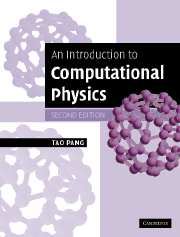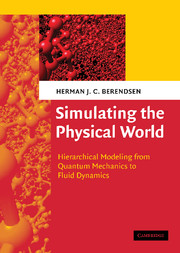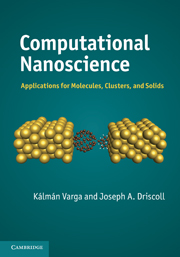An Introduction to Computational Physics
Thoroughly updated and revised for its second edition, this advanced textbook provides an introduction to the basic methods of computational physics, and an overview of recent progress in several areas of scientific computing. Tao Pang presents many step-by-step examples, including program listings in JavaTM, of practical numerical methods from modern physics and related areas. Now including many more exercises, the volume can be used as a textbook for either undergraduate or first-year graduate courses on computational physics or scientific computation. It will also be a useful reference for anyone involved in computational research.
- Detailed descriptions of the traditional computational methods
- Concise introductions to the newest developments in scientific computing
- Vivid and practical examples from contemporary physics and related fields, useful to students and researchers. Includes extensive exercises
- Programs written in Java
Reviews & endorsements
"Overall, the book is clearly written. This book might be quite helpful to anyone working on the topics it covers. It provides insight into a great range of topics in mathematics, physics, and computing. The many exercises should benefit students. The many techniques discussed should suit workers in a variety of fields."
David P. Maroun for Canadian Association of Physics
Product details
February 2006Hardback
9780521825696
402 pages
254 × 196 × 24 mm
1.034kg
Available
Table of Contents
- Preface to first edition
- Preface
- Acknowledgements
- 1. Introduction
- 2. Approximation of a function
- 3. Numerical calculus
- 4. Ordinary differential equations
- 5. Numerical methods for matrices
- 6. Spectral analysis
- 7. Partial differential equations
- 8. Molecular dynamics simulations
- 9. Modeling continuous systems
- 10. Monte Carlo simulations
- 11. Genetic algorithm and programming
- 12. Numerical renormalization
- References
- Index.





